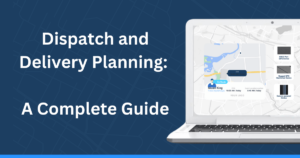Starting an online store can be an exciting and lucrative venture. This guide will provide you with a comprehensive overview of the steps involved.
This includes setting up your online store, choosing a niche, selecting an e-commerce platform, designing your shop, and so much more.
Starting an online store
Starting an online store involves several critical steps that lay the foundation for a successful digital business.
You need to be strategic about your decisions to set a strong foundation for your online business.
The building bricks are:
- Thorough planning beforehand, and
- Research for the right products and your target market.
One of the initial and most crucial steps is to identify and understand your niche.
This will help focus your efforts while also tailoring your marketing strategies for a target audience.
Thus, selecting the right e-commerce platform is vital for providing a smooth and efficient customer experience.
Benefits of starting an online store
You might ask yourself what are the benefits of starting an online store? What sets it apart from a brick and mortar business?
For starters, you will have lower startup costs. Online stores generally require less capital to start up than a traditional ecommerce business.
And if your store exists online, you’ll also be able to sell to customers worldwide. This will expand your market beyond local boundaries.
Another benefit is flexibility. Starting an online store means you get to operate your business from anywhere in the world. This won’t always be so easy with a brick and mortar store.
You can even set your own working hours.
Lastly, an online business is easier to scale. This can be done by adding more products, and thus expanding into new markets.
If you couple this expansion with data insights, you’d be able to hone into customer behavior and optimize your marketing strategies.
Disadvantages of starting an online store
Of course, it won’t always be smooth sailing, and we’d miss the point of this article if we don’t explain the disadvantages too.
Serious concerns:
Security and privacy. You would need to ensure that customer data is protected. This can be done by putting measures in place to prevent cyber attacks.
Why is this important? Account breaches and data leaks are so common in our day and age that protecting customer data has become a top priority for businesses.
Consumer case study
A recent survey conducted by PwC with 20,662 consumers across 31 countries revealed that 83% of consumers value and trust companies that prioritize their personal data.
More than 80% of those who participated in the research also want assurances that their data won’t be shared or sold.
LEARN MORE HERE: What do customers really want? Data protection
Pro tip: Shipping logistics can be complex and costly to navigate. Be prepared to learn everything you can about online marketplaces.
Less serious concerns
Another disadvantage – albeit not so serious depending on where you are based – is your reliance on the internet. After all, it’s going to be an online store.
Starting an online store means you’ll face bigger competition since the digital marketplace can be saturated (depending on your niche and target market). This could make it hard to stand out.
Apart from the technical aspects of starting an online store, you might also run into shipping issues.
You might also have to deal with some of the technical issues that go into setting up and maintaining an online store. Sure, you could hire a professional to assist, but that would accrue additional costs.
Setting up your own online store
Setting up an online store involves several technical and operational steps.
First, you need to select a reliable e-commerce platform that aligns with your business needs.
Once chosen, you’ll need to design your website to ensure it’s user-friendly and visually appealing. Depending on your website building expertise, you might need to bring in an expert for this.
Actually, it’s highly advised to partner with a digital marketing service agency to get this right. A professional agency would provide you with comprehensive and results-driven digital marketing solutions to grow your business.
Next you would need to integrate essential tools and features such as payment gateways, shipping options, and customer support systems.
These elements are crucial for providing a seamless shopping experience for your target audience. You’d also want to ensure that your website is optimized for search engines to attract organic traffic.
By following these steps, you’ll be well on your way to launching a successful online shop.
Choose your niche
Before diving into the technical aspects, you need to decide what type of products you want to sell.
Here are some key considerations:
- Passion and knowledge: Choose a niche you are passionate about and knowledgeable in.
- This will help you stay motivated and provide better customer service.
- Market demand: Use tools like Google Trends, Keyword Planner, and market research reports.
- Use this to determine if there is demand for your products.
- Competition analysis: Analyze your competitors to understand their strengths and weaknesses.
- You’d want to look for any gaps in the market you could fill.
- Profit margins: Ensure the products you choose have a healthy profit margin after considering all costs.
- If you slip up here, it could impact the profitability of your online store.
Do market research
Market research is crucial for understanding your target audience. With this data, you can refine your product offering.
Here’s how to conduct effective market research for online stores:
- Conduct focus groups to get more detailed feedback.
- Gather insights directly from potential customers through surveys and interviews.
- Analyze competitors’ websites, product offerings, and customer reviews to identify opportunities and threats.
Create a business plan
Why do you need a business plan? A well-thought-out business model could serve as a roadmap for your online store. It allows you to set clear objectives (and achieve them!) while also identifying potential challenges.
You could also use a business model to develop contingency plans for when something goes wrong, or for attracting investors.
Food for thought:
According to the Small Business Administration [SBA], businesses with a written plan grow 30% faster than those without one!
In short, it will guide your business decisions and help secure funding if needed.
Key components of a business model include:
- Executive summary: Brief overview of your business and goals.
- Market analysis: Insights from your market research.
- Organization and management: Structure of your business and team.
- Products and services: Detailed description of what you will sell.
- Marketing strategy: How you plan to attract and retain customers.
- Financial projections: Revenue, expenses, and profit forecasts.
ALSO READ: Anthropic’s new model is a game-changer for your online store
Choosing a platform for your online store
Choosing the right e-commerce platform is critical for your online store’s success. You need to consider several factors, including ease of use, customization, and the cost involved to set it all up.
Shopify, for instance, is known for being super easy to use and affordable, while WooCommerce offers additional customization options via a WordPress website.
According to a 2021 survey by eCommerce Platforms, 29% of e-commerce websites use WooCommerce (making it the most popular platform), followed by Shopify at 21%.
Popular options to consider for online stores:
- Shopify:
- User-friendly, all-in-one platform with various themes and apps.
- Great for beginners and small to medium-sized businesses.
- WooCommerce:
- A WordPress plugin that offers flexibility and customization.
- Ideal for those with some technical knowledge.
- BigCommerce:
- Scalable platform with robust features for growing businesses.
- Great for more advanced retailers.
- Magento:
- Highly customizable and powerful, but requires technical expertise.
- Suitable for large enterprises.
- Squarespace:
- Easy to use with beautiful design templates.
- Good for small businesses and creatives.
Design your online store
Your website’s design plays a crucial role in attracting and retaining customers. A well-designed site not only enhances customer experience, but it also has an impact on your conversion rates.
Studies done by Adobe show that 38% of users will stop engaging with a website if the content or layout is unattractive. It’s also crucial to have a mobile-friendly design, since more than 50% of your web traffic will come from visitors using their smartphones.
Basic web design tips
I’ve built my fair share of WordPress sites, and while I’m by no means a qualified graphic designer, I can offer some basic web design tips:
- Optimize your site for search engines.
- Ensure your site is easy to navigate with a clear menu structure.
- Make sure it looks good on all devices, including phones and tablets.
- Use professional images for your products to create a strong visual impact.
- Use compelling call-to-action buttons to guide visitors towards making a purchase.
While not a design issue, you’d want to ensure that your site loads quickly. A delay of just one second could reduce conversions by 7%, according to UX Collective.
Next levels of starting an online store
After setting up your online store, the next step involves refining your processes and enhancing the customer experience.
You’d want to focus on providing excellent customer service while also managing your inventory efficiently.
This is where customer feedback comes in handy! You’ll need this feedback to make necessary improvements and keep your products up-to-date with market trends.
Don’t sleep on monitoring
Additionally, you’d also want to continuously monitor your website’s performance and make data-driven decisions to optimize your marketing strategies.
And don’t neglect social commerce! Engage with your customers through social media and email marketing to build a loyal customer base.
Loyal and happy customers = more sales and growth.
Payment and shipping options
Offering multiple payment and shipping options can enhance the customer experience.
According to Logistics giant DHL, 6% of shoppers abandon their carts due to a lack of payment options.
Here’s what to consider:
- Payment gateways: Integrate popular payment gateways like PayPal, Stripe, and Square to provide secure and convenient payment options.
- Shipping providers: Partner with reliable shipping providers like USPS, FedEx, and UPS. Consider offering multiple shipping options.
- Shipping rates: Decide whether you will offer:
- Free shipping,
- Flat-rate shipping, or
- Real-time carrier rates.
Regardless of the route you choose, ensure your shipping policy is clear and transparent.
ALSO READ: How Mastercard’s Shopping Muse can transform your online store
Legal considerations
Ensure your online store complies with all legal requirements. This is crucial if you want to avoid potential fines. You’d need the right business model to cover your taxes, personal liability, and ability to raise capital.
Having clear terms and conditions can also protect your business from disputes and misunderstandings.
Here are some key areas to focus on:
- Business structure: Choose a suitable business structure (e.g., sole proprietorship, LLC, corporation) and register your business.
- Licenses and permits: Obtain any necessary licenses and permits required for your industry and location.
- Terms and conditions: Draft clear terms and conditions, including your return policy, privacy policy, and terms of service.
- Tax compliance: Understand your tax obligations, including sales tax, and ensure you have systems in place to manage them.
Develop a Marketing Strategy
A solid marketing strategy is essential to attract customers to your online store since it can significantly boost visibility and sales.
According to HubSpot, businesses with a blog section on their website are 13 times more likely to see positive ROI.
Interesting fact: The niches with the most profitable blogs in 2022 were, according to RankIQ, food (42.8%), followed by lifestyle with 13.3% and travel with 10%.
Consider the following tactics:
- Content marketing:
- Create valuable content such as blog posts, videos, and infographics.
- Social media marketing:
- Use platforms like Facebook, Instagram, and Twitter to promote your products.
- Email marketing:
- Build an email list and send regular newsletters with updates and promotions.
- Paid advertising:
- Invest in paid advertising options like Google Ads, Facebook Ads, TikTok Ads, and Instagram Ads.
- Search Engine Optimization:
- Optimize your website for search engines to improve organic rankings.
And finally! Launch your online store
Once everything is set up, it’s time to launch your online store.
But hold on a second before you open the virtual doors to your business. Take the time to follow this checklist:
Test your website:
And test it extensively! Send it to your mother, best friend, and cousin twice removed. Ask everyone to test it on different devices and with different browsers.
What might work on Google Chrome could look terrible in Mozilla. And your website might look an absolute banger for someone browsing on a laptop, but could be a mess for smartphone users.
Pro Tip: Don’t forget about delivery options!
Here’s why…
@steve_orenstein A great delivery experience is vital to business growth. No hate intended! But here’s what Myer could have done differently… #smallbusiness #Delivery #LastMileDelivery
♬ original sound – Steve Orenstein 🚚 – Steve Orenstein 🚚
Ensure all links and forms are working, and that all payment gateways are secure and working correctly.
In fact, do a transaction and see what the experience is like for you.
Create a launch plan:
Only once you are 1000% sure everything is as smooth as it can be online, can you plan a launch strategy.
This could even include a pre-launch campaign to build anticipation and a launch day event. It’s advised to use multiple marketing channels to maximize reach and engagement.
Think emails, social media, word-of-mouth, and such. You could also create a buzz by collaborating with influencers, or by offering exclusive pre-launch discounts and early access deals to subscribers.
NEED MORE TIPS? The psychology of Promo FOMO and how to get it right
According to Marketing Profs, businesses that prioritize lead nurturing will generate approximately 50% more sales-ready leads at 33% lower cost.
Concept clarified: Lead nurturing is the process of building relationships with potential customers at every stage of the sales funnel and throughout the buyer’s journey.
In other words, by focusing on developing relationships with your potential customers, you could outperform competitors who do not prioritize lead nurturing.
Online store performance:
Post-launch, use analytics tools to monitor site traffic, sales channels, and customer behavior. Tweak your online store and product offering as needed to improve performance.
But don’t stop post-launch. Regularly reviewing your analytics is crucial for identifying trends and making data-driven decisions.
Need help with this? I break it down here: Data-driven e-commerce: Understanding your customers
Don’t sleep on this! According to Forbes, businesses that use data-driven insights are 23 times more likely to beat their competitors in customer acquisition.
Post-launch considerations
After launching your online store, focus on continuous improvement and growth.
Here are a few strategies to keep in your virtual toolkit:
- Customer feedback:
- Collect and analyze customer feedback to identify areas for improvement.
- Product expansion:
- Gradually expand your product line based on market demand and customer preferences.
- Customer support:
- Provide excellent customer support through multiple channels, including live chat, email, and phone.
- Ongoing marketing:
- Continue to refine and execute your marketing strategy to attract new customers and retain existing ones.
Further down the road
As your business grows, consider these strategies to ensure long-term success:
- Technology upgrades: Keep your tech updated to improve efficiency and security.
- Partnerships: Form strategic partnerships to expand your reach and resources.
- Diversification: Diversify your product line or explore new markets to reduce risk and increase growth opportunities.
Starting your own online store: In summary
Starting an online store might seem like an insurmountable project.
But trust me, it will pay off in the end.
By following a structured approach and continuously optimizing your strategies, you can build a successful online store.
Want the TLDR version for starting your online store website?
- Choose a niche.
- Conduct market research.
- Create a business plan.
- Select an e-commerce platform.
- Design your online store.
- Set up payment and shipping options.
- Ensure legal compliance.
- Test your website.
- Set up a launch plan.
- Set up a post-launch and marketing plan.
About the author
Cheryl has contributed to various international publications, with a fervor for data and technology. She explores the intersection of emerging tech trends with logistics, focusing on how digital innovations are reshaping industries on a global scale. When she's not dissecting the latest developments in AI-driven innovation and digital solutions, Cheryl can be found gaming, kickboxing, or navigating the novel niches of consumer gadgetry.












